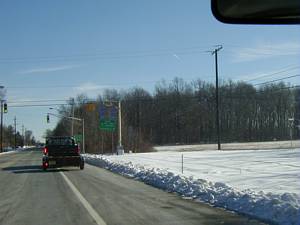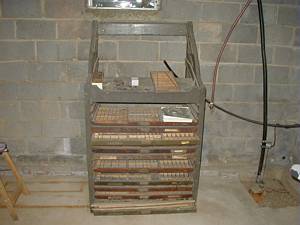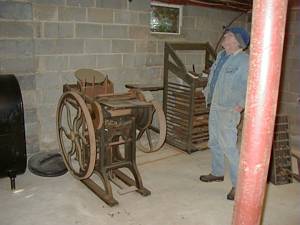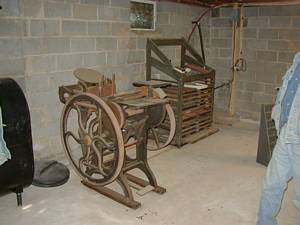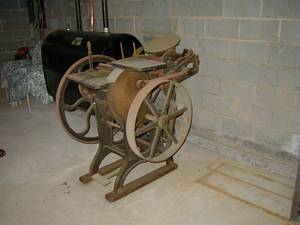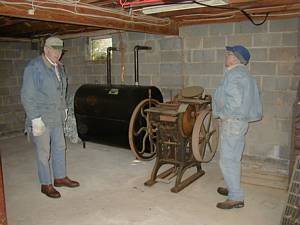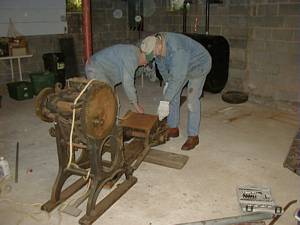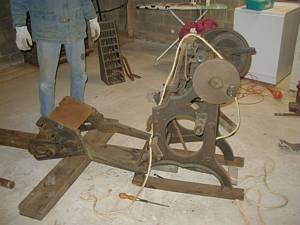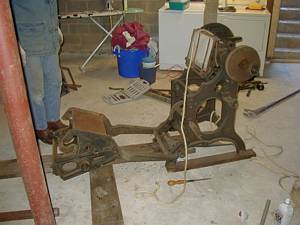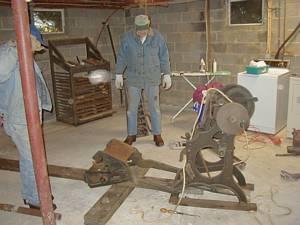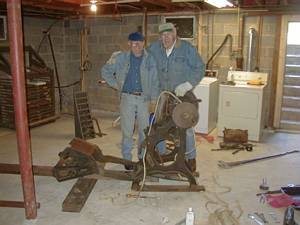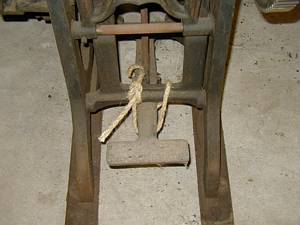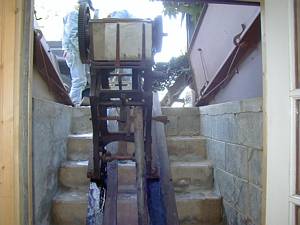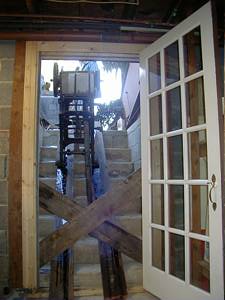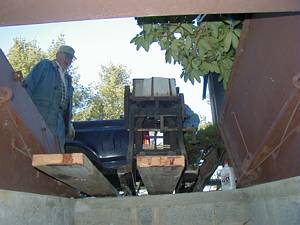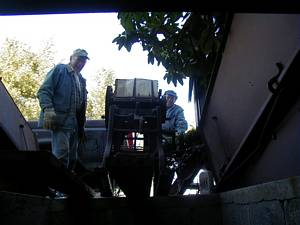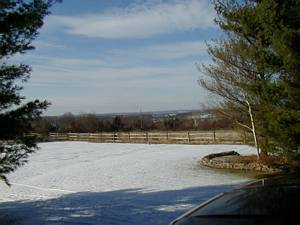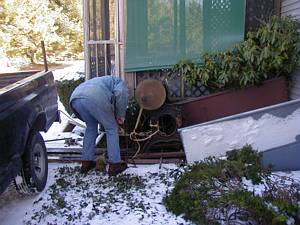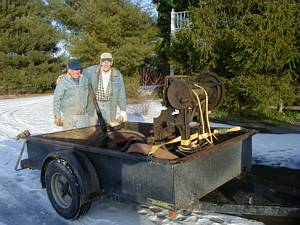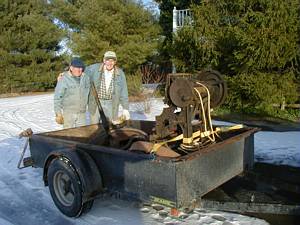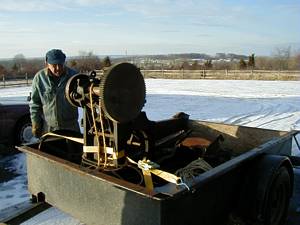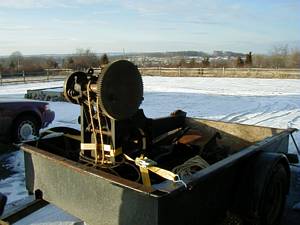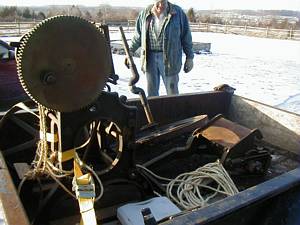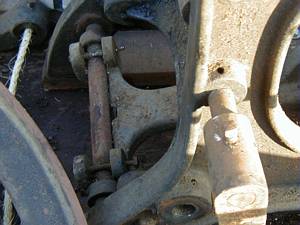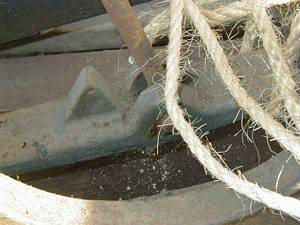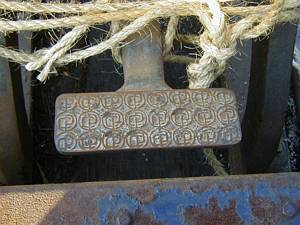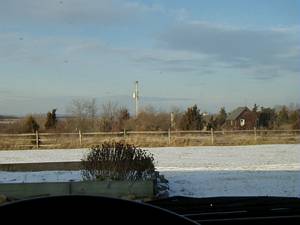Procedure we followed:
First of all, I must point out that our primary concern
was safety - both for ourselves and for the press. These
presses can be more than about 100 years old. And,
especially with the Early Series, the cast iron can be
very brittle. These presses don't bounce, the crack...
and they are hard to braze back together again. Sort of
like a 1,000-pound humpty dumpty...
- First, we removed the feed & delivery boards and
the entire throw-off assembly.
(note: re-mounting the throw-off can be tricky. We
had to be careful when we bolted the curved back plate
on and we adjusted gently. We wiggled things a lot and
tested it before we tightened the bolts)
- Then we removed the flywheel.
- To remove the flywheel, we first drove the main
drive gear in with a block of 2x4 and a 3# hammer.
- Once the gear had moved in, the key was free to
remove
- With the key out, the gear came off
- On the flywheel side, we removed 3 screws and then
backed up and wiggled the flywheel until it came all
the way out. We had to turn it a bit to get it through
the slots on the side of the machine.
- Then tied the press closed with a heavy rope - wrapped
about the knee-high cross piece in the front and
- Then we removed the side arms
- And let the back (bed) down gently onto some 2x6's.
Mr. Crombie helped guide it down, but the lowering was
controlled by the rope in the front.
- Then we loosen the shaft collars and begain driving
out the back shaft using a heavy drift pin and 3" sledge
hammer
- note: on a subsequent move, I finished
up driving the shaft out using a broom stick. It's long
and it fits perfectly. It's much easier to drive out the
shaft from the outside than from between the legs.
- we greased a pair of 2x12's with motor oil and then
pulled it up the ramp with a mobile chain hoist using a
come-along as backup.
- Then we hooked up the come-along to the trailer hitch
and winched it up a ramp onto the trailer.
It took about 2 hours, moving slowly and carefully all the
way.
At the other end, we unloaded at ground level - where it
stays. Reassembly was pretty much the reverse of this
process. But, on another move, we learned that the throw-off
lever assembly may need to be coaxed into place and adjusted
a bit.
|
